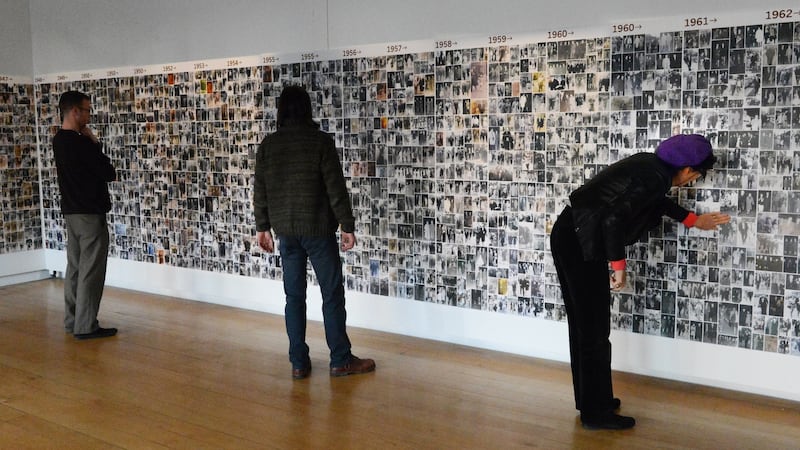Every night during the pandemic lockdown, the poet Dermot Bolger set out to walk deserted Dublin streets, allowing his imagination free rein to speculatively meditate on his life and the lives of often forgotten figures who once populated those same streets – men such as Herbert Simms, Dublin’s brilliant and tragically overworked housing architect, and Grace Gifford Plunkett, defiant in her lonely final years.
Bolger’s poems and meditations from those walks are published this week in a new book, entitled Other People’s Lives (New Island, €12.95) This meditation is written by Bolger in memory of Abraham Feldman, as known as Arthur Fields, whose family fled persecution in Ukraine in 1885 and found sanctuary in Dublin, like so many Ukrainians are doing today. Feldman spent over half a century working as a street photographer on O’Connell Bridge.
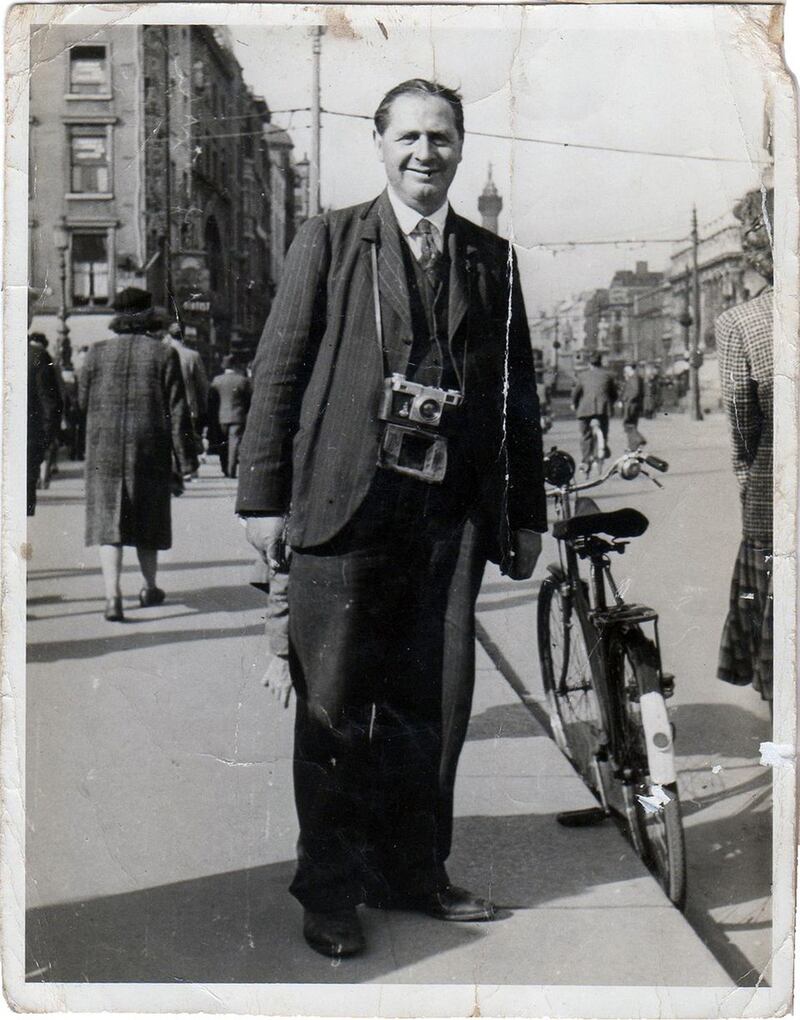
I
A homeless girl, crouched on a flattened cardboard box, now occupies your allotted spot, her plastic cup held aloft to crowds who cross this bridge with the same indifference they showed towards you during the forlorn last decade of the half century during which you positioned yourself in the path of the multitudes who traversed the Liffey every day amid busy lives; with only a diminishing trickle still pausing, lured by your antiquated camera and a handwritten sign hung from your neck which read: "Instant colour photographs".
Few passers-by knew your name, but in fact you possessed two: “Abraham Feldman”, the Jewish one you were born with, not long after your family fled from persecution in Ukraine, and, “Arthur Fields”: that more neutral pseudonym chosen to allow you to blend into these adopted Dublin streets. You were living proof of how astute Joyce was to have made his fictitious refugee, Rudolf Virag, change the surname that he bequeathed to his son to the more anodyne sounding “Bloom”.
James Joyce’s Dublin was unalterable, but your Dublin never stayed still. You both chronicled the city from opposite ends of the spectrum: Joyce immortalising each fleeting encounter, you discarding thousands of vignettes in the unsold negatives destroyed; those photos with serial numbers for which no punter ever came to pay your wife to develop in a small darkroom located down a city-centre side street.
But you accumulated enough ten-shilling notes to raise a family from the curiosity of strangers who wanted mementos of Holy Communions or blind dates or of a family seeing off a daughter onto an emigrant ship. You provided printed evidence for people unable to afford cameras to let children later recall how loved they once were by grandparents who would skimp for weeks to buy them confirmation dresses or take them into town to a proper cafe as a birthday treat. While you and Bloom both navigated insular cities, the odd paradox is that the two men whose eyes we now most vividly see Dublin through were both slighted outsiders: a Hungarian and a Ukrainian Jew.
Not that you had time to engage in such philosophical musing, being focused – like most émigrés – on the mechanics of making a living, on gambits that local people never considered because they were too fixed in their thinking or afraid to stand out. Firstly, a sound studio for the inquisitive to record their voices, and then you purchased a box camera to join the band of street photographers competing on O’Connell Street. You bagged one side of the bridge, while your brother plied this same trade, hogging the other balustrade.
Elegant looking in your prime, your Ukrainian features radiated mystique. You exuded glamour throughout the 1940s by attracting glamour to you on nights when excited girls posed on route to dinner dances and their beaus, awkward in dress suits, eagerly reached for your numbered card, hoping that the surprise gift of a photo might unlock amorous favours. You were the closest that ordinary Dubliners ever came to encountering paparazzi, being momentarily allowed to star in the plotlines of their own lives: couples whom you first snapped when courting, later returning with their children so that each change in their lives were chronicled in monochrome images in biscuit tins.
But cities change, technologies evolve and occupations disappear; gas lamplighters, shorthand typists, letterpress compositors. By 1981, at the age of 80, you had become a relic from a bygone era who yet still felt compulsively compelled to stand on O’Connell Bridge. With your darkroom long gone, you now sold instamatic Polaroids that bled into colour when you patiently held them in your palm. A seven-mile walk endured every morning, and then the same walk undertaken when exhaustion or hunger made you abandon your post; your footsteps slow, shoulders sagged, until, aged 87 you took your last photograph – the first one you had sold in weeks – of a visiting Italian photographer who, seeing you there, was transported back to the streets of his youth. He asked you to autograph it and, as if you had discarded declining your parents’ warning for you to try to blend in, you signed it, not in the name by which you had lived your life in public, but in the name they gave you after fleeing persecution: Abraham Feldman.
You died, aged 93, leaving no archive behind, never expecting anyone outside your family to ever remember you.
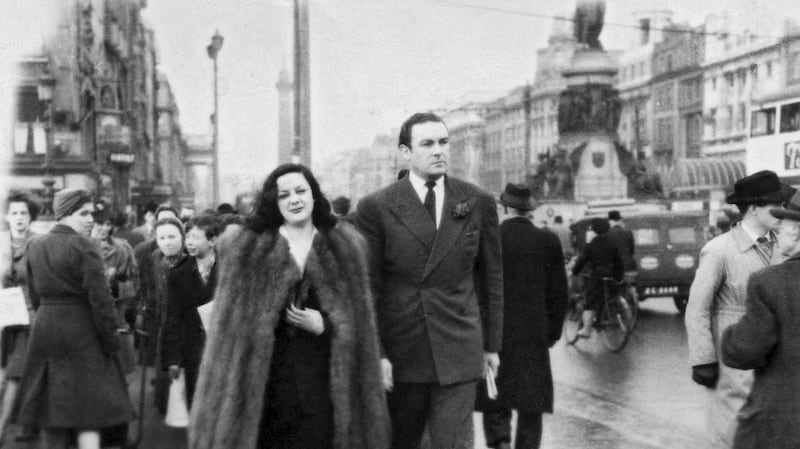
II
When I study your thousands of photographs that strangers kept, I am struck by how your art lay in its absence of art, in your opportunistic randomness, with no time for finesse when you quickly raised your camera. Yet you still possessed an instinctive ability to frame each moment snatched from the street life that evolved around you like a speeded-up film with you the only unchangeable fixture on that bridge. Over time your appearance changed from a flamboyant presence into resembling an old penitent condemned to repeat the same task of lifting your camera like an act of repentance, long after the world ceased to need the services of street photographers to sell us back the proof of our own lives.
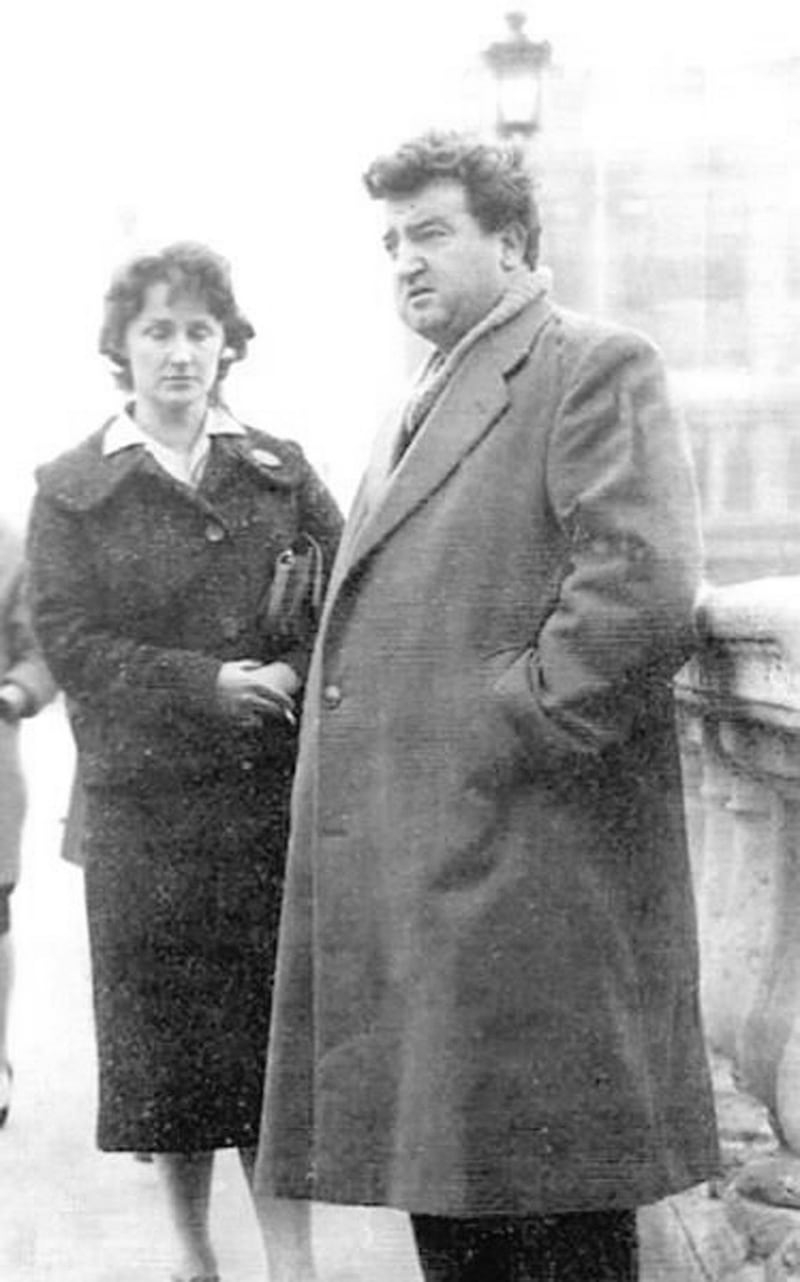
III
Your daily thoughts fascinate me or maybe your absence of thought. Did the task of staring through a lens alleviate any need to think? You lived in a continuum, taking just enough care to frame passers-by you hadn't got time to care about; punks sporting Mohawks or tipsy civil servants allowed their weekly half an hour to cash their pay cheques. This became photography not as work but as ritual or fetish – although no dark secrets lay hidden among the hoarded negatives, because no negatives were hoarded, no image ever developed if not already paid for. You looked into no person's soul, unless in the early years when certain sights were new and you had the companionship of a brother on the opposite pavement to nod to if a film star passed or some girl unaware of her burgeoning beauty. Did you both slip into the Yiddish that your parents spoke when you joked about the preening foibles of passing folk or was your talk always only about the daily tally of pictures sold?
Your separateness wasn’t just from being at the opposite end of the lens from other Dubliners, but from being unable to avail of their insular complacency throughout the Hitler conflict when they accepted assurances printed in The Irish Press that nothing your compatriots might be enduring in Poland was worse than the injustices being suffered by Ulster Catholics, and when Irish papers castigated uninformed citizens for paying undue heed to the war happening in Europe.
In June 1945 you watched most couples leave the Metropole, unwilling to meet your eye or pose for any pictorial reminders of that night when they had to leave the censored cocoon smugly woven around themselves, and face the harsh truths embedded into your DNA ever since your parents had been forced to flee hatred. People felt angry at those newsreels making them confront the piled-up skeletal bodies in Belsen, the gaunt eyes of survivors surveying them from the screen while they shifted in discomfiture in the Grand Circle plush seats amid Corinthian columns in the Metropole Cinema, fearful to give credence to these horrors beyond comprehension in case their public acceptance of the truth saw them stigmatised by neighbours as West Britons who had fallen for Allied propaganda.
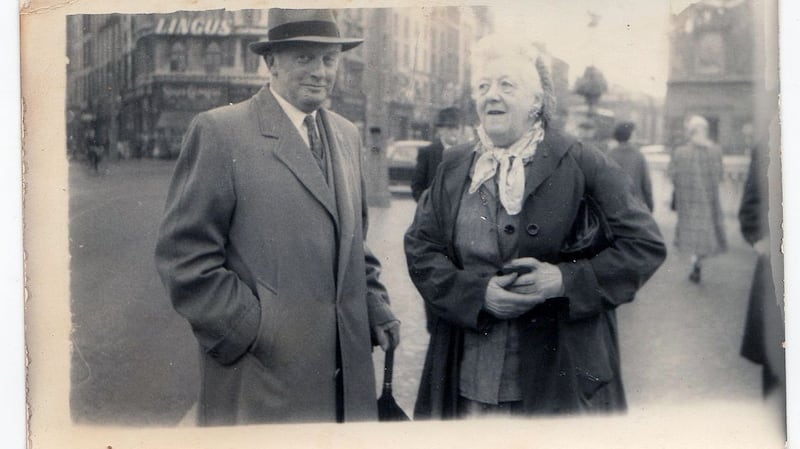
IV
Joyce once claimed Dublin could be rebuilt from his masterpiece, but he only gave us, in scrupulously indelible detail, a single day in its life. The only indelible detail in your Dublin was the balustrade on O'Connell Bridge. Fashions changed before your lens as you captured beehive hairstyles, bell-bottoms, rising hems, elephant flares, spandex skirts, ankle boots and tube-tops.
You kept any opinions on trends to yourself as you stood, surrounded by such crowds that you resemble a boulder around which river water must find its way. You parted crowds and stood apart in crowds. That is how I remember you in my youth. No matter how packed that bridge became, you radiated a fixed solitude. You were always there and yet not there; in public solitary confinement, trapped within that migrant’s compulsion to always earn your keep; snapping anyone who stopped without truly seeing us any longer or realising how your life’s work had been to chronicle a city that became home to Arthur Fields but perhaps was never home to Abraham Feldman.
It has been left to strangers to select what was preserved from your oeuvre. The random shots that strangers bought, sensing they would feel significant when rediscovered years later by descendants emptying out drawers. Mementos of casual moments when we weren’t dressed up for formal occasions and presenting our best face to the world, but just being ourselves because this moment wasn’t important; it was a snap on a bridge, taken by chance and purchased from curiosity. But maybe we were never so true to ourselves as in those images because we saw in your eyes how you didn’t care, how in many respects you were not truly there.
This leads me back to the undeveloped negative of your thoughts during those days spent in wind and rain, when you aged but observed how we always seemed to remain the same age. Jorge Luis Borges would have much to say to you about life. But you would have nothing to say to him. You said nothing to anyone, walking home every night to the wife who washed your hair before you slept to gather strength to recommence your daily purgatory. You even missed her funeral to stand in your usual spot; perhaps knowing no way to express emotion or to frame grief except through taking Polaroids that attempted to freeze time. But you were out of time, a relic of the past still plying an obsolete trade.

V
You professed no wish for remembrance, so the strange irony is that your pictures keep being unearthed to fill the missing gaps in many family histories. Often they exist with no context or commentary, except perhaps for a date or name scribbled on the back to indicate that someone regarded this moment as being precious and kept your photo to remind them of a person they once knew, or to remind their descendants about the lives they once led when young. Because these informal photographs, snapped by the man on the bridge, are often the only images of lost people to have survived. Our grandparents when they were so much younger than we are now, giddy in the adventure of love that brought us into being. Our nameless aunts who lost touch after emigrating to seek work, or groups of young best friends who swore to never forget each other but all died in nursing homes, after forgetting even their own names.
The rich owned their Nikon Rangefinders and expensive Leicas. They possessed photo albums and Bell and Howell cine cameras. But you were our photographer, making us momentarily pause when rushing to catch the last bus to Ballyfermot or Crumlin or Finglas, amazed to find you still there in old age, still touting for trade, still possessing a foreignness, yet so indelibly part of our city that you achieved the ultimate in true fame, which is anonymity. The man on the Bridge who never appeared in his photographs, but became an ever-present witness on the fringe of everything.
The Street Photographer is from a collection of poems and meditations, entitled Other People's Lives, published by New Island
